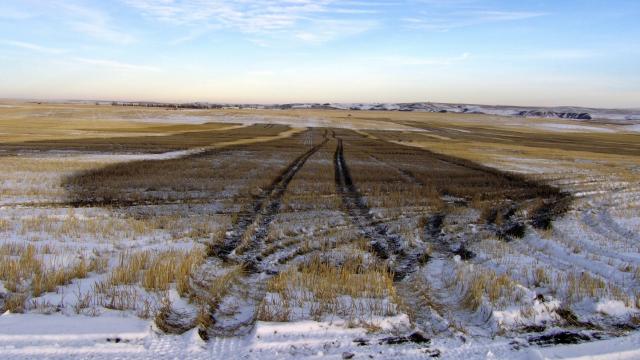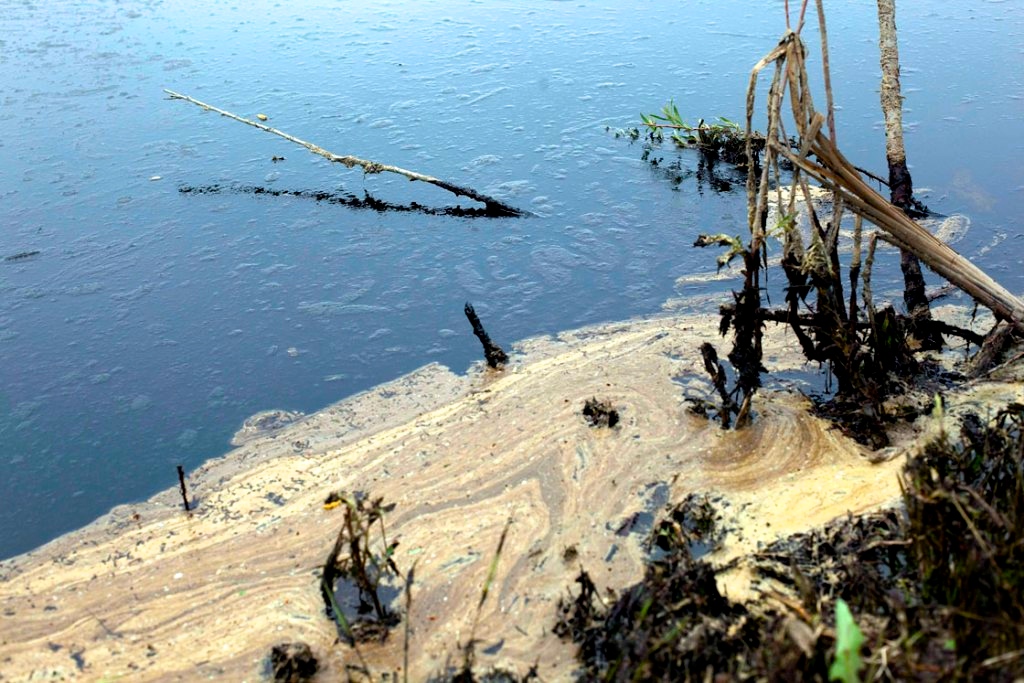
A new study suggests that naturally occurring upward flow of groundwater in the oilsands region is creating fractures and weaknesses that may explain a series of catastrophic events for the controversial mining industry.
The findings, first published in a PhD thesis last year and soon to appear in a paper for the American Association of Petroleum Geologists Bulletin, have significant implications for worker safety, groundwater protection, the security of massive industrial wastewater disposal in the region as well as the economics and placement of more than 100 steam plants and mines.
Half of all bitumen now produced from the oilsands relies on a form of oil production that injects highly pressurized steam into deep deposits of cold bitumen.
Recent eruptions of steam, bitumen and groundwater at oilsands operations may all represent an industrial collision with a natural process that drives salty groundwater into bitumen-bearing reservoirs where it fractures and weakens the rock near and above bitumen deposits.
The events include the massive 12,000 barrel bitumen seepage to the surface by Canadian Natural Resources Ltd. (CNRL); a huge blowout at Total's Joslyn steam plant project in 2006; and a large groundwater gusher at Shell's Muskeg River mine.
That 2010 disaster turned a newly created dam for mining waste into a lake full of 7-billion litres worth of highly saline water.
These calamities cost the industry tens of millions of dollars. The disasters also required large-scale cleanup efforts or resulted in project abandonment.
Harvard researcher Benjamin Cowie, who recently presented his findings to industry, now argues that all of the events share one geological feature: they occurred along the edge of an ancient salt formation that runs in a northwest to southeast direction through the Athabasca and Cold Lake oilsands deposits.
Geologists call it the Prairie Evaporite and it is part of the Devonian formation that lies underneath the tarsand deposits.
But based on the chemistry of water samples collected by industry from the region, Cowie believes that ancient glacial water is not only eating away the rock but creating new weaknesses under these bitumen layers targeted by industry.
In some places the highly saline water has erupted into bitumen formations where industry has recorded the sudden appearance of sinkholes or seeps of highly saline water. Many of these naturally occurring seeps run directly into the Athabasca river.
In addition Cowie suspects that that aquifers with high salt content have dissolved and weakened the rock infrastructure beneath bitumen deposits and in some places created vertical fractures as the highly pressurized salty water rises toward the surface.
At this point industry-made fractures created by oilsands mining and steaming operations then collide with these up swells of water or connect to metre scale fractures created by the dissolution of salt by the groundwater movement.
"This is a big regional process and an entirely new environmental risk for the oilsands," Cowie said in an exclusive Tyee interview.
Underground Saltwater Can Destroy Seal of Cap Rock
The Alberta Energy Regulator (AER), which is mapping the area to identify geological factors that may affect cap rock seals, now supports Cowie's findings.
A 2013 paper presented to the American Rock Mechanics Association in San Francisco said that the regulator had identified "a complex sub-Cretaceous structure created by salt dissolution and collapse, which has implications for cap rock integrity and also for the disposal of produced and process water into Devonian strata."
The paper also warned that ancient groundwater channels can carve holes in cap rock (a shale/sandstone layer that purportedly seals bitumen formations from other rock layers). In addition this protective cap rock thins or erodes to nothing in many places in the tarsands.
In other words, no geological seal exists to prevent industry made fractures caused by high-pressurized steam injections or waste water injection from erupting to the surface.
Earlier this year the AER abruptly suspended proposed shallow steam plant operations over a large area of the tarsands, worth billions of dollars, due to concerns about punching holes through the cap rock and polluting groundwater.
New Clues to Cold Lake Disaster
The regulator's San Francisco presentation also revealed that large science gaps now exist on the issue. Stress regimes below 350 metres in the region are "not well understood and there is very little publicly available data." Nor has groundwater been properly mapped or monitored in the region.
A June 2014 preliminary report by CNRL on its large bitumen seepage in Cold Lake also underscores how poorly industry understands the complexity of rock structures in the region.
The company's first report on the causes of the headline-making event blames industry made rock fractures that allowed bitumen and steam to break through a shale barrier and then travel by natural fractures, faults or badly cemented wellbores to the surface.
Since 2009 CNRL Primrose East steam operation in Cold Lake has leaked thousands of barrels of bitumen and steam to the surface in as many as five identified distinct ground fractures contaminating both surface and groundwater.
However, the CNRL report does not mention the possibility that the erosion of a salt formation underlying its Primrose East field may also play a role in weakening local geology by inducing fractures and faults.
Nor does the CNRL's report make any reference to the 2013 AER study or Cowie's work.
But an independent technical panel, which reviewed CNRL's causation work, flags the novel geological hazard as a major concern.
The panel noted, for example, that the geological weaknesses created by dissolving unique salt formations under the bitumen deposits in Primrose East "could influence shale integrity."
Salt-related subsidence could also result in changes in rock stress and fractures that damage bitumen bearing zones, adds the technical report. "Clearly identifying these potential geologic hazards" is imperative, adds the report.
New Factor in Assessing Risk
Some bitumen miners, however, have quietly recognized the new geohazard and have recently set up agreements to share data on what's happening in the Devonian formation and how these events might compromise industrial activity.
One recent industry presentation, for example, noted that the dramatic erosion of salt deposits by glacial waters in the eastern portion of the Athabasca tarsands deposit "has created additional complexity" for steam plant operations.
Another 2014 presentation warned, "the presence of a highly transmissive aquifer in the 'Intact' Prairie Evaporite Formation will need to be considered as part of their risk analysis and, as needed, risk mitigation plans."
Bernhard Mayer, a University of Calgary hydrologist who supervised Cowie's PhD thesis, says the government and industry need to do a "more detailed investigation of the nature of these localized pathways between the McMurray formation and underlying Devonian units."
They also need to study "the integrity of cap rocks overlying the bitumen-containing units and assess the cap rock integrity in view of the stress regime and the pressures associated with steaming operations."
Cowie adds that there is little information about the complex geological phenomena.
"The extent of recent rock dissolution beneath the oilsands region is unknown and I think the absence of information poses a real risk to oilsands producers."
By linking all these serious events to one mechanism Cowie hopes that regulators and industry "will pay more attention to it" and perform better regional mapping to study the risks.
The new geohazard has major implications for worker safety, the economics of bitumen extraction and groundwater protection in the region.
During the catastrophic Joslyn steam blowout and the bursting of the previously unknown saline aquifer at Shell's Muskeg mine, bitumen workers could have been seriously injured near the discharge sites, says Cowie.
The geohazard could also significantly affect economics by "requiring more detailed geological characterization to truly identify what's happening with groundwater in these systems, or in the worst case, substantial and expensive cleanup efforts would be required if a leak does occur."
David Schindler, a world famous water researcher and long-time critic of rapid bitumen development, called Cowie's research clear and significant and urged provincial authorities to change how projects are approved and monitored.
"Once again, the scientific homework is done after the assignment is due. When will the Alberta government ever learn?"
3 WAYS TO SHOW YOUR SUPPORT
- Log in to post comments












